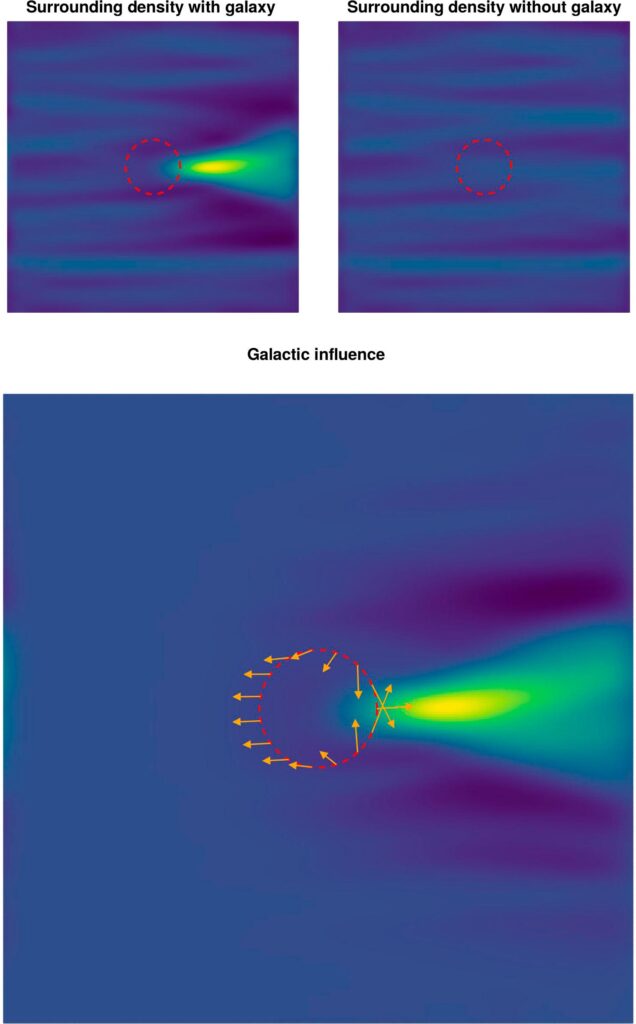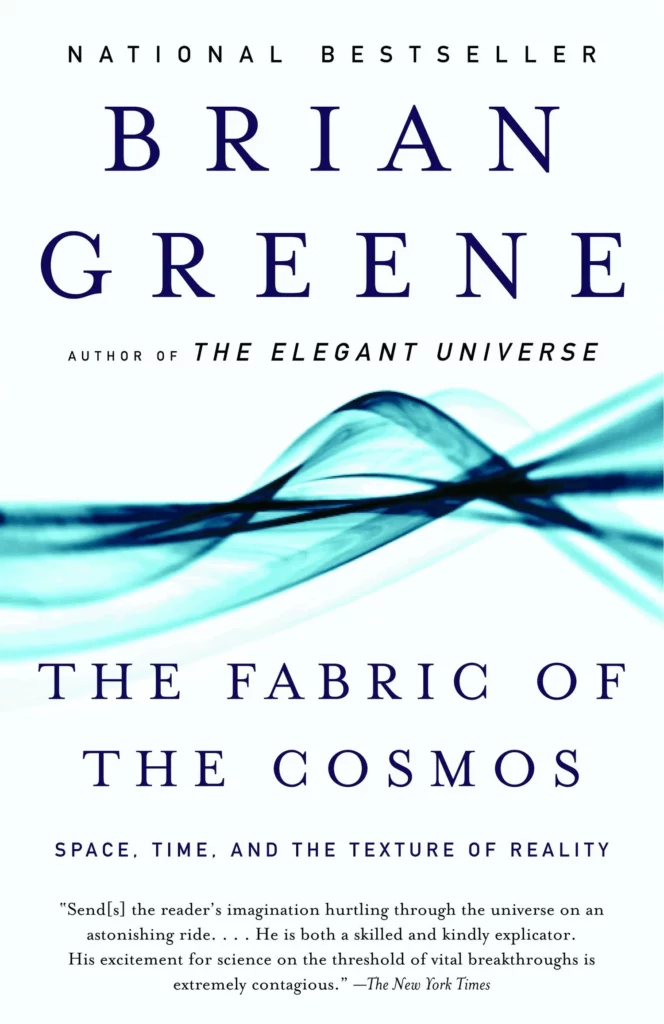Imagine peering into the cosmos and witnessing galaxies with lopsided shapes, their asymmetry telling a fascinating story. These distorted structures hold the key to unlocking the mysteries of dark matter, the invisible substance that dominates the universe.
Our study sheds light on how gravitational effects and a phenomenon called dynamical friction work together, revealing this elusive matter’s behavior.
The Quest for Dark Matter’s Speed:
Finding a galaxy moving independently of dark matter is crucial. Fortunately, the vast cosmic dance ensures this isn’t difficult.
Galaxies, being massive, exert gravitational pull on all forms of matter, including the invisible dark matter. As dark matter streams past a galaxy, this pull attempts to alter its course.
However, due to their inertia, dark matter particles don’t immediately change direction and instead “overshoot” the galaxy.
This overshoot leads to a fascinating phenomenon: dynamical friction.
As dark matter particles pass behind the galaxy, their density increases in this region. This denser cloud, in turn, slows down the galaxy’s motion itself. The strength of this slowdown depends on how fast the dark matter particles were moving initially.
Slower particles spend more time interacting with the galaxy, leading to a more significant slowdown and a more pronounced lopsidedness.
 |
| Dynamical friction. The panels depict sparse areas of the universe with dark colors and dense areas with light colors. The upper panels show the density around a galaxy if the galaxy’s gravity bends (left) or does not bend (right) the trajectories of dark matter particles. The lower panel shows the difference between them, or how the galaxy affects the distribution of dark matter. The arrows represent the acceleration caused by the overdensity behind the galaxy, from which the friction on the center of the galaxy is deducted. Since the arrows have different directions and strengths in different areas, the tidal forces are able to change the shape of a galaxy. |
Galaxy Shapes as Clues:
Now imagine a large, lopsided galaxy. The varying density of dark matter behind it creates regions experiencing different frictional forces. This difference, similar to Earth’s tides caused by the Moon, warps the galaxy’s shape into an asymmetrical form.
Studying this lopsidedness allows us to estimate the speed of the dark matter that interacted with the galaxy.
It’s worth noting that this method has limitations. For instance, it wouldn’t work if dark matter particles were massive enough to be comparable to the galaxies themselves (such models are thankfully ruled out). Additionally, other factors like past collisions or gas inflows can also contribute to lopsidedness, necessitating careful analysis.
The good news is that finding suitable lopsided galaxies isn’t a challenge – about 30% of them exhibit this asymmetry. However, pinpointing precisely how lopsided they need to be and how far to look within their structures require further investigation.
Isolating the Signal:
To ensure the observed lopsidedness truly reflects dark matter interaction, studying galaxies relatively isolated from other major influences becomes crucial. This minimizes the chances of other factors skewing the results.
Our research has established a framework for calculating the forces involved in lopsided galaxies.
The next step is to identify suitable candidates in the universe and use them to precisely measure the velocity of dark matter relative to galaxies.
Cosmology’s Crucial Test:
Understanding dark matter’s speed has profound implications. It serves as a crucial test bed for new theoretical models and could finally unveil the true nature of this enigmatic substance, opening exciting new avenues in our understanding of the universe.
So, the next time you gaze at the night sky, remember that even the seemingly lopsided shapes of galaxies hold hidden tales, waiting to be deciphered.
These stories whisper of invisible matter, gravitational interactions, and the ongoing quest to unravel the universe’s deepest secrets.
Sources:
Published 15 December 2023, Astronomy & Astrophysics;
“Back to the present: A general treatment for the tidal field from the wake of dynamical friction”
DOI: 10.1051/0004-6361/202347235
Discover:

The Fabric of the Cosmos:
Space, Time, and the Texture of Reality
$12.99 (50% off)
“Perhaps the single best explainer of abstruse science in the world today. . . . Greene has a gift for finding the right metaphor.” —The Washington Post

